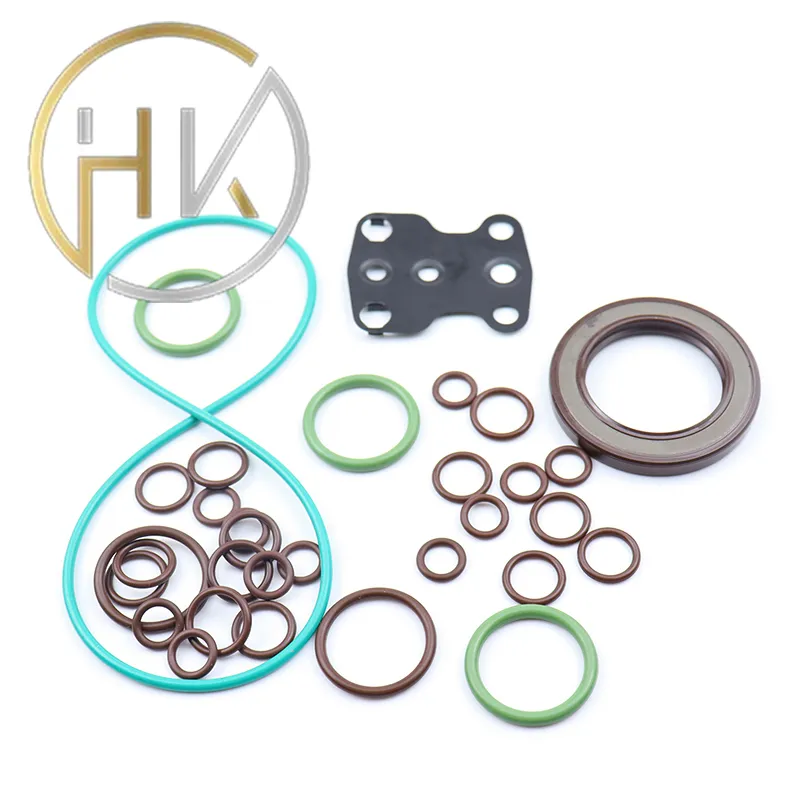Dec . 11, 2024 14:36 Back to list
ဟိုက်ဒရူးလီကိုးတံဆိပ်တွေပါ။
Hydraulic Ram Seals A Comprehensive Overview
Hydraulic ram seals are essential components in hydraulic systems, playing a crucial role in maintaining efficiency and performance. These seals are designed to prevent fluid leakage, ensuring that the hydraulic system operates smoothly. In this article, we will delve into the importance, types, and maintenance of hydraulic ram seals.
Importance of Hydraulic Ram Seals
The primary function of hydraulic ram seals is to contain hydraulic fluid within the system. This containment is vital because any leakage can lead to reduced system efficiency, increased wear and tear on components, and potential system failure. Furthermore, hydraulic leaks can pose safety hazards, especially in high-pressure applications. Therefore, ensuring the integrity of hydraulic ram seals is critical for the overall performance and safety of hydraulic systems.
Types of Hydraulic Ram Seals
There are several types of hydraulic ram seals, each designed for specific applications and conditions. Some of the most common types include
1. O-Rings These are circular seals that fit into a groove and provide a tight seal against fluid leakage. O-rings are versatile and can be used in various hydraulic applications.
2. U-Cups U-cups are designed to handle pressure from one side while providing a seal on the other. They are commonly used in hydraulic cylinders and are effective in preventing fluid bypass.
3. Backup Rings These rings are used in conjunction with other seals to prevent extrusion and provide additional support. They are often used in high-pressure applications where standard seals may fail.
4. Rod Seals and Piston Seals Rod seals are used to prevent leakage around the rod of a hydraulic cylinder, while piston seals are used to seal the piston within the cylinder. Both types are critical for maintaining system pressure and performance.
hydraulic ram seals

Maintenance of Hydraulic Ram Seals
Proper maintenance of hydraulic ram seals is essential to ensure their longevity and effectiveness. Here are some tips for maintaining these seals
1. Regular Inspection Regularly inspect seals for signs of wear, damage, or leakage. Early detection of issues can prevent more significant problems down the line.
2. Clean Environment Keep the hydraulic system area clean to prevent debris from damaging seals. Contaminants can cause abrasion and premature failure of seals.
3. Monitor Fluid Levels Ensure that hydraulic fluid levels are maintained within recommended limits. Low fluid levels can lead to increased wear on seals and components.
4. Use Proper Sealing Materials When replacing seals, use materials that are compatible with the hydraulic fluid and the operating environment. This can help prevent chemical degradation and extend the life of the seals.
5. Follow Manufacturer Guidelines Always adhere to the manufacturer’s recommendations for installation and maintenance of hydraulic ram seals. This can make a significant difference in performance and lifespan.
Conclusion
Hydraulic ram seals are vital for the efficient and safe operation of hydraulic systems. Understanding the types of seals available and their maintenance requirements can help ensure optimal performance and prevent costly failures. By taking proactive measures to maintain hydraulic ram seals, operators can enhance the reliability and longevity of their hydraulic systems.
-
Unlocking the Potential of Hydraulic Systems with Essential Sealing Solutions
NewsAug.06,2025
-
Unleash the Power of Your Hydraulic Systems with Our Premium Seal Kits
NewsAug.06,2025
-
Specialized Hydraulic Seal Kits for Breakers, Pistons, and Presses
NewsAug.06,2025
-
Revitalize Hydraulic Systems with Premium Repair and Seal Kits
NewsAug.06,2025
-
Fortify Your Cylinders with Premium Sealing Solutions
NewsAug.06,2025
-
Elevate Hydraulic System Reliability with Specialized Seal Kits
NewsAug.06,2025
-
TCN Oil Seal Metal Ring Reinforcement for Heavy Machinery
NewsJul.25,2025
Products categories
















